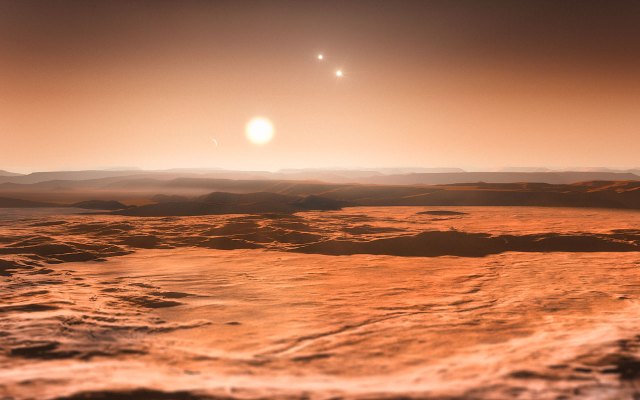Nearby Star Hosts Three Super-Earths in Habitable Zone
A closer look at a star once thought to hold no more mysteries reveals a treasure trove of exoplanets.

An international team of researchers and astronomers have found what could be the motherlode of habitable exoplanets in a nearby star system. According to a new examination of the data, researchers believe the nearby star Gliese 667C — found just 22 light years away in the constellation Scorpius — hosts six planets. That’s twice as many bodies as the star was thought to be home to, but that’s not the big news. The big news is that three of the planets orbiting Gliese 667C are thought to be in the habitable zone, capable of hosting liquid water, and possibly able to support life.
The new planetss were found after researchers combined existing data on the star system with new information gleaned from a variety of other telescopes, including the European Southern Observatory’s Very Large Telescope, the W.M. Keck Observatory, and the High Accuracy Radial velocity Planet Searcher, or HARPS. The new results suggest that not only does Gliese 667C — the faintest star in the three-star cluster it’s a part of — host a total of six planets, but the habitable zone around the star is jam-packed with three planets. That, researchers say, is as many as the area could support, making the habitable zone around the star completely full.
All three of the new planets are super-Earths, planets larger than our own, but smaller than giants like Uranus. The planets are crammed together in a space smaller than the orbit of Mercury, and closer to Gliese 667C than that planet is to our Sun. Since Gliese 667C is much smaller and dimmer than our star, though, its habitable orbit is different from our own.
(via European Southern Observatory, image via ESO)
- The IAU will keep doing the naming of exoplanets, thank you very much
- This exoplanet is a lava world, like in every video game ever
- This chart of all the exoplanets is great, but getting kind of outdated
Have a tip we should know? tips@themarysue.com